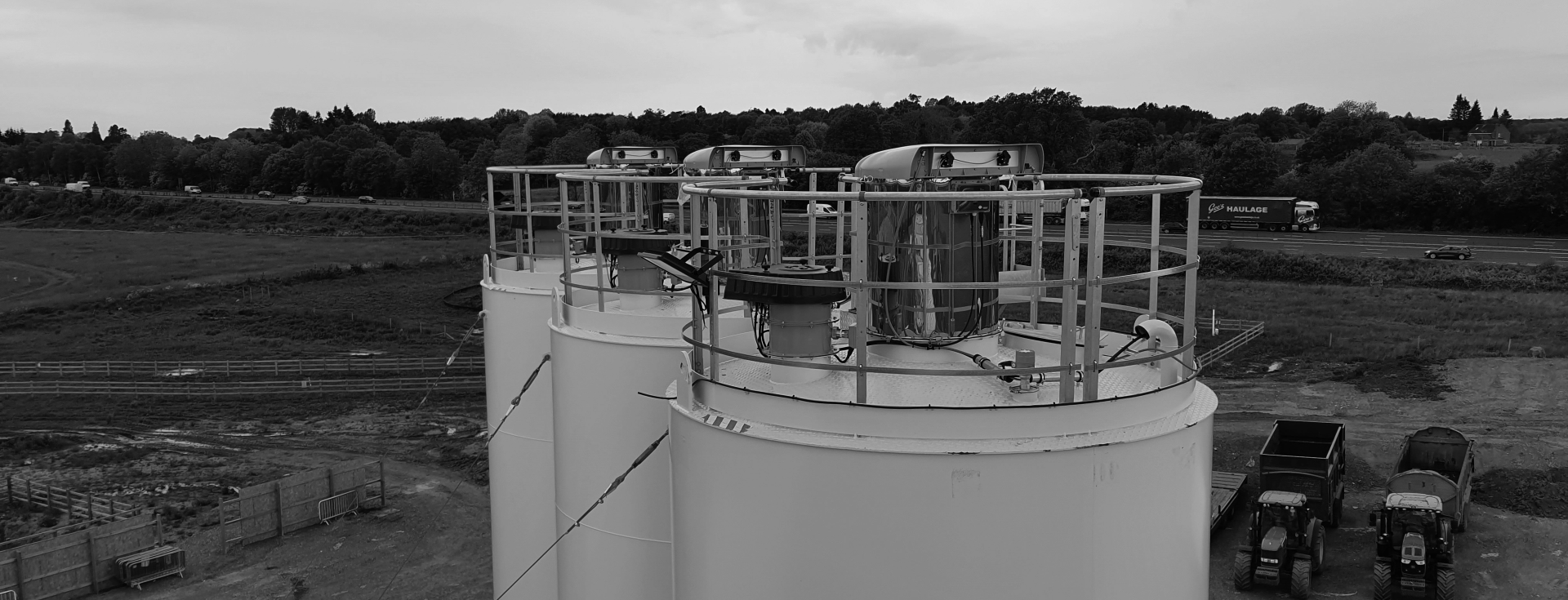Silo over pressurisation occurs when the volume of air entering the silo exceeds the volume air escaping or venting from the silo, as shown in the graphics below:

Here is an example of a healthy delivery. If air can enter a silo and exit via its venting unit without restriction, then there will be no over-pressurisation issues. Silo over-pressurisation only occurs when the volume of air entering the silo exceeds the volume air that can escape, as shown in the examples that follow.

Here, airflow out of the filter unit is restricted, leading to a pressure build-up during filling. Failure of the filtration system to vent air efficiently could be caused by inadequate maintenance of safety equipment, or by filter blinding due to over-filling. An increase in air pressure above one psi inside a silo can cause serious damage.

Here is an example of a healthy delivery. If air can enter a silo and exit via its venting unit without restriction, then there will be no over-pressurisation issues. Silo over-pressurisation only occurs when the volume of air entering the silo exceeds the volume air that can escape, as shown in the examples that follow.
Over-pressurisation can occur because of several factors, either individually or combined. These factors include:
- Failure of the pressure sensor
- Failure of the filtration system to vent air efficiently
- Failure of the level measuring equipment
- Uncontrolled discharge from the tanker
- Filter blinding caused by over filling
- Inadequate maintenance of safety equipment
- Faulty or damaged inlet control valves
As the majority of silos are not pressure rated vessels they can rupture at pressures as low as 1 or 2 psi. Without adequate safety systems in place sites risk fatal staff injuries, damage to equipment, product loss and environmental pollution – not to mention hefty fines. Therefore silo protection is essential for avoiding the risks of over-pressurisation and overfilling. Guidelines from the Mineral Product Association (MPA), the HSE and DEFRA all make clear the importance of a reliable, testable safety system that is kept in optimum condition through regular servicing.
However, even with a protection system in place, there is still a risk: testing safety equipment at the top of a silo brings additional hazards involving working at height. Because of this risk, sites are unlikely to test their safety equipment before every fill.
Hycontrol’s advanced SHIELD Lite silo protection system is the most advanced on the market. It is also the only system that meets and even exceeds current safety guidelines.
The key components of a typical SHIELD Lite SPS installation are shown below.

The key advantages
- Hycontrol’s systems are the first to eliminate working-at-height risks with the introduction of a complete ground-level test (GLT), enabling all essential safety components (including the pressure relief valve and pressure sensor) to be checked before every fill. The entire system is tested in just six seconds before allowing the fill. If any component is not functioning correctly, the system will alert the user, and the valve will not open – it’s that simple.
- The patented FLEX pressure sensors are the only such device custom-designed for silo protection. They are the only pressure sensors that are fully and accurately testable over the entire working range, ensuring correct functionality as part of the GLT. They are self-cleaning and control the inlet valve throughout the filling process. If the pressure level becomes dangerous, the sensors trigger an alarm and close the inlet valve whilst the situation is addressed.
- The PRV test facility is precisely calibrated to ensure it will only lift at the correct pressure. Previously this was only possible by removing the unit and bench-testing it. This action has the bonus of cleaning the valve of any accumulated product.
- The system uses DP Series vibrating high-level sensors, which (unlike old-fashioned paddle switches) have no mechanical parts to wear out and break. The system integrates with Hycontrol’s Hyvent, a highly efficient, self-cleaning filter unit.
- Crucially, the systems record high pressure, high level and PRV lift events with a time and date stamp, and count the number of times an alarm condition is reached. This record is essential for preventative maintenance purposes as it will allow engineers to address issues in the system before they become acute problems.



